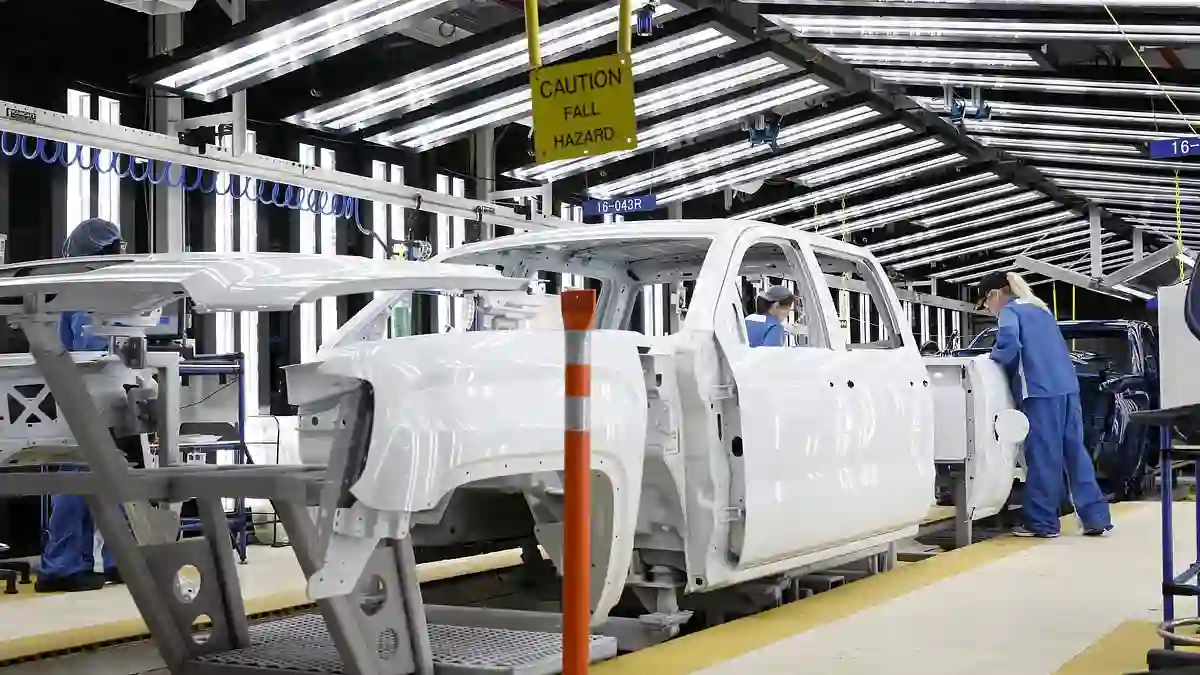For truck lovers and loyal Chevy fans, the Chevrolet Silverado and GMC Sierra are practically household names.
But if you’re thinking about buying one soon, you might want to pay attention—because General Motors is once again hitting the brakes on production.
GM Halts Mexico Plant for Second Time in Two Months
General Motors has confirmed it will temporarily shut down its Silao, Mexico assembly plant from August 4 to August 15.
That’s the second production pause in just two months—this same plant also went idle for two weeks back in early July.
The Silao plant plays a major role in building two of GM’s most profitable vehicles: the Chevrolet Silverado and the GMC Sierra.
While these trucks are also made in Indiana, Michigan, and Ontario, Canada, the Silao facility is a key player in keeping up with demand.
GM Says It’s Business as Usual—But People Are Wondering
GM insists these scheduled pauses are nothing out of the ordinary.
In a statement to DailyMail.com, the company described them as part of “standard operating processes” meant to keep production optimized.
And it’s true: automakers often take time to tweak their lines or balance out inventory.
But this latest two-week shutdown is turning heads—especially since there doesn’t appear to be any major reason for it.
No Inventory Glut, No Big Redesigns
So what’s the big mystery? According to reports, there’s no overwhelming pileup of unsold Silverados or Sierras, and no announced design changes that would normally require a line overhaul.
As of May, Chevy had a 65-day supply of vehicles on dealer lots—slightly under the industry average of 70 days.
GMC had a 77-day supply—a bit above average but not concerning.
That makes the timing of this second pause feel… curious.
Could Trump’s Tariffs Be the Hidden Factor?
Industry analysts are pointing to another possible reason for the production hiccup: tariffs.
With President Donald Trump’s administration pushing a 25% tariff on imported cars, GM is rethinking how and where it makes its vehicles.
GM CEO Mary Barra recently estimated that the company expects to pay $4–5 billion in tariffs this year.
Though she’s said those costs won’t be passed directly to buyers, the impact on GM’s strategy is becoming clear.
GM Is Investing Big in U.S. Manufacturing
To help offset the blow from tariffs, GM is pouring money into its American operations.
For example, it’s spending $888 million to overhaul an engine plant in Buffalo, New York, which will soon be churning out V8s for trucks and SUVs.
Even bigger: GM is moving production of its Chevy Equinox and Blazer SUVs from Mexico to U.S. plants in Kansas and Kentucky, part of a broader $4 billion manufacturing shift.
Sticker Shock Could Be Coming
While these investments may help GM sidestep some tariff pressure, experts say higher labor costs in the U.S. could eventually make their way onto price tags.
As Morningstar analyst David Whiston put it, GM’s move is smart—but not without financial consequences.
“The higher costs might need to be passed down to dealers and consumers,” he noted.
Still, he added, GM is expected to stay profitable in 2025, even with the added expenses.
Electric Future Plays a Role in Reshuffle
Meanwhile, GM is going all in on electric vehicles (EVs).
The company recently shut down production of two Cadillac SUV models to make room for battery production lines—a clear sign that it’s gearing up for its next-gen electric lineup.
One of the most anticipated models is the relaunch of the Chevy Bolt, which is expected to benefit from these new EV-focused plants.
GM Built Nearly 900,000 Cars in Mexico Last Year
For context, GM produced around 889,000 vehicles in Mexico in 2024, so the Silao plant’s role is no small piece of the puzzle.
As the company shifts more production stateside, these short-term shutdowns might be growing pains that signal a larger transition.
What’s Next for Silverado and Sierra Fans?
If you’ve got your eye on a Silverado or Sierra, this latest news doesn’t mean you need to panic.
But it’s clear that GM is reworking its supply chains and factory strategies, and that could influence availability and pricing in the not-so-distant future.
One thing’s for sure—pickup trucks aren’t just about horsepower anymore.
Now, they’re caught up in a much bigger global manufacturing game.
